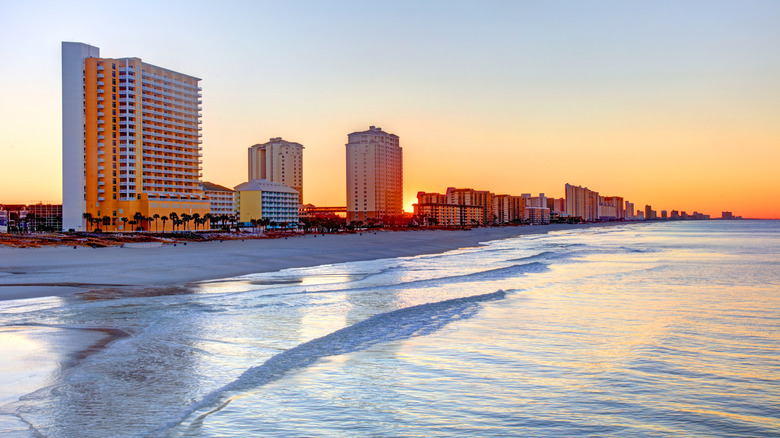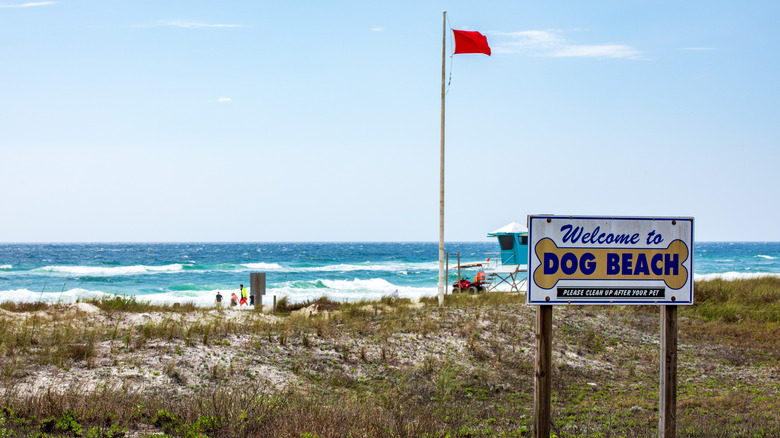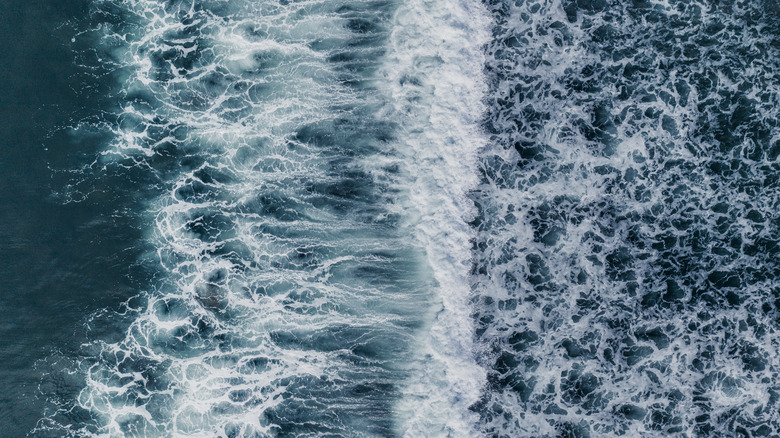Panama City Beach, Florida Is One Of The Most Deadly Because Of This Natural Occurrence
Florida is a top pick for those looking to soak up the sun and enjoy sandy shores, and it's easy to see why. With over 800 miles of coastline and almost 200 public beaches, the Sunshine State draws in hundreds of millions of tourists annually — 140.6 million in 2023 alone per Visit Florida — and we'd wager that a good chunk of them come for the golden sands. But while many come to bask on Florida's shores, not all of the state's beaches are as safe as they are stunning. In fact, some of the most dangerous beaches in the U.S. are right there, and atop the list is Panama City Beach, notorious for its deadly rip currents that have tragically claimed far too many lives.
If you're unfamiliar with rip currents, they're not something to underestimate. The National Ocean Service defines them as "localized currents that flow away from the shoreline toward the ocean" that can move at speeds up to eight feet per second. These currents vary in strength, but the most powerful can easily sweep even experienced swimmers away. "The water isn't escaping to the left or the right, it's piling up," Simon Boxall, a teaching fellow at the University of Southampton's National Oceanography Centre, explained to National Geographic. "It has to escape somewhere and it escapes through a rip current."
Panama City Beach's rip currents claimed approximately eight lives in 2024 alone, seven of which occurred over a span of just nine days. The previous year, six people lost their lives, again because of these rip currents. These are sobering statistics, but Panama City Beach is pulling out all the stops to prevent these tragedies from happening again, ramping up efforts to keep swimmers safe and save lives.
Panama City Beach has been proactive in trying to minimize rip current-related accidents
In response to the alarming rise in rip current-related incidents at Panama City Beach, the city has significantly boosted its safety efforts to protect both tourists and locals alike. In July 2024, the Bay County Tourist Development Council invested an additional $360,000 solely for safety measures. This budget increase also allowed the city to hire six more lifeguards to patrol the busy beaches.
"We invite visitors to come enjoy our beaches," Mayor Stuart Tettemer said in a statement. "We should be doing what we can in order to keep them safe. The Gulf is a wilderness. It is not a pool. It is not a lake. It is not a creek. It is a wilderness, and it is different than the bodies of water many of our visitors are use to dealing with." The city's expanded safety efforts include launching a Beach Ambassador Program to put more boots on the sand to educate beachgoers on the rip current dangers, investing in new imaging technology to identify swimmers in distress more efficiently, and the addition of flotation devices along the coast for use in emergencies when lifeguards aren't immediately available.
Panama City Beach has also begun issuing tickets to those who ignore red flag warnings. These flags are placed to signal dangerous water conditions, and anyone who insists on entering the water despite being warned could face a fine of up to $500. "We have to give them a warning," Police Capt. John Deegins told USA Today. "And if they refuse to obey, that's when they get a ticket."
How to keep yourself safe from rip currents
It's understandable if you start thinking twice about visiting Panama City or any of Florida's beaches after learning about the dangers of rip currents. However, by following the safety guidelines and staying alert, you should be able to enjoy the beach without worry. The key is knowing how to spot a rip current and, just as importantly, how to break free from one. First things first — never ignore the warning flags. Even if the water looks calm, a red flag means danger. "Just because you see a single red flag and you think you can get into the water don't treat it like a green light," Daryl Paul, Beach Safety Director, Panama City Beach Fire Rescue, shared with News Channel 7.
Being able to recognize rip currents is equally important. According to the National Weather Service, some telltale signs include darker patches of water, foam, or debris moving offshore, and oddly-shaped areas in the shoreline known as "scalloped embayments." If you're unsure, don't hesitate to ask a lifeguard for help in identifying one — it's always better to be informed before you enter the water.
If you do find yourself caught in a rip current, the most crucial thing is not to panic. Fighting against the current is the worst move. Simon Boxall recommends changing your mindset and pretending that the rip current is a river instead. "You'd never swim along a river to get out, you'd swim to the side," he told National Geographic. It's also recommended to swim to the shore to escape the pull, but if you're unable to do this, float on your back to conserve energy. "Float to live," Chris Cousens, water safety lead at the RNLI in Wales, advised to the outlet. "Avoid the panic, rest, recuperate on your back."


